Long, R.Girshick, Even so, the results show a pretty good performances on several datasets, which will be presented in SectionIV. Contour detection and hierarchical image segmentation. Conditional random fields as recurrent neural networks. Object Contour Detection with a Fully Convolutional Encoder-Decoder Network . (up to the fc6 layer) and to achieve dense prediction of image size our decoder is constructed by alternating unpooling and convolution layers where unpooling layers re-use the switches from max-pooling layers of encoder to upscale the feature maps. Our network is trained end-to-end on PASCAL VOC with refined ground truth from inaccurate polygon annotations, yielding . can generate high-quality segmented object proposals, which significantly training by reducing internal covariate shift,, C.-Y. 30 Apr 2019. The encoder extracts the image feature information with the DCNN model in the encoder-decoder architecture, and the decoder processes the feature information to obtain high-level . Compared to the baselines, our method (CEDN) yields very high precisions, which means it generates visually cleaner contour maps with background clutters well suppressed (the third column in Figure5). For an image, the predictions of two trained models are denoted as ^Gover3 and ^Gall, respectively. The architecture of U2CrackNet is a two. Several example results are listed in Fig. Therefore, we apply the DSN to provide the integrated direct supervision from coarse to fine prediction layers. mid-level representation for contour and object detection, in, S.Xie and Z.Tu, Holistically-nested edge detection, in, W.Shen, X.Wang, Y.Wang, X.Bai, and Z.Zhang, DeepContour: A deep I. AB - We develop a deep learning algorithm for contour detection with a fully convolutional encoder-decoder network. RCF encapsulates all convolutional features into more discriminative representation, which makes good usage of rich feature hierarchies, and is amenable to training via backpropagation, and achieves state-of-the-art performance on several available datasets. Machine Learning (ICML), International Conference on Artificial Intelligence and visual attributes (e.g., color, node shape, node size, and Zhou [11] used an encoder-decoder network with an location of the nodes). Given the success of deep convolutional networks [29] for . support inference from RGBD images, in, M.Everingham, L.VanGool, C.K. Williams, J.Winn, and A.Zisserman, The Proceedings of the IEEE RIGOR: Reusing inference in graph cuts for generating object prediction: A deep neural prediction network and quality dissection, in, X.Hou, A.Yuille, and C.Koch, Boundary detection benchmarking: Beyond Our network is trained end-to-end on PASCAL VOC with refined ground truth from inaccurate polygon annotations, yielding much higher precision in object contour detection . A new way to generate object proposals is proposed, introducing an approach based on a discriminative convolutional network that obtains substantially higher object recall using fewer proposals and is able to generalize to unseen categories it has not seen during training. 2016 IEEE. View 10 excerpts, cites methods and background, IEEE Transactions on Pattern Analysis and Machine Intelligence. The above proposed technologies lead to a more precise and clearer In TD-CEDN, we initialize our encoder stage with VGG-16 net[27] (up to the pool5 layer) and apply Bath Normalization (BN)[28], to reduce the internal covariate shift between each convolutional layer and the Rectified Linear Unit (ReLU). It is apparently a very challenging ill-posed problem due to the partial observability while projecting 3D scenes onto 2D image planes. yielding much higher precision in object contour detection than previous methods. [57], we can get 10528 and 1449 images for training and validation. Most of proposal generation methods are built upon effective contour detection and superpixel segmentation. 41571436), the Hubei Province Science and Technology Support Program, China (Project No. Observing the predicted maps, our method predicted the contours more precisely and clearly, which seems to be a refined version. 13. We develop a deep learning algorithm for contour detection with a fully convolutional encoder-decoder network. S.Guadarrama, and T.Darrell. Then the output was fed into the convolutional, ReLU and deconvolutional layers to upsample. To guide the learning of more transparent features, the DSN strategy is also reserved in the training stage. All persons copying this information are expected to adhere to the terms and constraints invoked by each author's copyright. encoder-decoder architecture for robust semantic pixel-wise labelling,, P.O. Pinheiro, T.-Y. The first layer of decoder deconv6 is designed for dimension reduction that projects 4096-d conv6 to 512-d with 11 kernel so that we can re-use the pooling switches from conv5 to upscale the feature maps by twice in the following deconv5 layer. 2. F-measures, in, D.Eigen and R.Fergus, Predicting depth, surface normals and semantic labels [13] developed two end-to-end and pixel-wise prediction fully convolutional networks. We consider contour alignment as a multi-class labeling problem and introduce a dense CRF model[26] where every instance (or background) is assigned with one unique label. We borrow the ideas of full convolution and unpooling from above two works and develop a fully convolutional encoder-decoder network for object contour detection. UR - http://www.scopus.com/inward/record.url?scp=84986265719&partnerID=8YFLogxK, UR - http://www.scopus.com/inward/citedby.url?scp=84986265719&partnerID=8YFLogxK, T3 - Proceedings of the IEEE Computer Society Conference on Computer Vision and Pattern Recognition, BT - Proceedings - 29th IEEE Conference on Computer Vision and Pattern Recognition, CVPR 2016, T2 - 29th IEEE Conference on Computer Vision and Pattern Recognition, CVPR 2016. Despite their encouraging findings, it remains a major challenge to exploit technologies in real . The final upsampling results are obtained through the convolutional, BN, ReLU and dropout[54] layers. Help compare methods by, Papers With Code is a free resource with all data licensed under, Object Contour and Edge Detection with RefineContourNet, submitting Our network is trained end-to-end on PASCAL VOC with refined ground truth from inaccurate polygon annotations, yielding much higher precision in object contour detection than previous methods. In this section, we introduce our object contour detection method with the proposed fully convolutional encoder-decoder network. convolutional encoder-decoder network. Each image has 4-8 hand annotated ground truth contours. booktitle = "Proceedings - 29th IEEE Conference on Computer Vision and Pattern Recognition, CVPR 2016", Object contour detection with a fully convolutional encoder-decoder network, Chapter in Book/Report/Conference proceeding, 29th IEEE Conference on Computer Vision and Pattern Recognition, CVPR 2016. better,, O.Russakovsky, J.Deng, H.Su, J.Krause, S.Satheesh, S.Ma, Z.Huang, Our fine-tuned model achieved the best ODS F-score of 0.588. There is a large body of works on generating bounding box or segmented object proposals. Bibliographic details on Object Contour Detection with a Fully Convolutional Encoder-Decoder Network. Learning to Refine Object Contours with a Top-Down Fully Convolutional D.Hoiem, A.N. Stein, A.Efros, and M.Hebert. ; 29th IEEE Conference on Computer Vision and Pattern Recognition, CVPR 2016 ; Conference date: 26-06-2016 Through 01-07-2016". Therefore, its particularly useful for some higher-level tasks. to use Codespaces. Compared the HED-RGB with the TD-CEDN-RGB (ours), it shows a same indication that our method can predict the contours more precisely and clearly, though its published F-scores (the F-score of 0.720 for RGB and the F-score of 0.746 for RGBD) are higher than ours. note = "Funding Information: J. Yang and M.-H. Yang are supported in part by NSF CAREER Grant #1149783, NSF IIS Grant #1152576, and a gift from Adobe. generalizes well to unseen object classes from the same super-categories on MS In this paper, we develop a pixel-wise and end-to-end contour detection system, Top-Down Convolutional Encoder-Decoder Network (TD-CEDN), which is inspired by the success of Fully Convolutional Networks (FCN) [], HED, Encoder-Decoder networks [24, 25, 13] and the bottom-up/top-down architecture [].Being fully convolutional, the developed TD-CEDN can operate on an arbitrary image size and the . regions. We find that the learned model generalizes well to unseen object classes from the same supercategories on MS COCO and can match state-of-the-art edge detection on BSDS500 with fine-tuning. The proposed architecture enables the loss and optimization algorithm to influence deeper layers more prominently through the multiple decoder paths improving the network's overall detection and . scripts to refine segmentation anntations based on dense CRF. If nothing happens, download Xcode and try again. This is the code for arXiv paper Object Contour Detection with a Fully Convolutional Encoder-Decoder Network by Jimei Yang, Brian Price, Scott Cohen, Honglak Lee and Ming-Hsuan Yang, 2016.. In general, contour detectors offer no guarantee that they will generate closed contours and hence dont necessarily provide a partition of the image into regions[1]. segmentation, in, V.Badrinarayanan, A.Handa, and R.Cipolla, SegNet: A deep convolutional Notably, the bicycle class has the worst AR and we guess it is likely because of its incomplete annotations. The encoder takes a variable-length sequence as input and transforms it into a state with a fixed shape. segments for object detection,, X.Ren and L.Bo, Discriminatively trained sparse code gradients for contour Monocular extraction of 2.1 D sketch using constrained convex object detection. Image labeling is a task that requires both high-level knowledge and low-level cues. 27 May 2021. 2016 IEEE Conference on Computer Vision and Pattern Recognition (CVPR), We develop a deep learning algorithm for contour detection with a fully convolutional encoder-decoder network. The proposed multi-tasking convolutional neural network did not employ any pre- or postprocessing step. Note that our model is not deliberately designed for natural edge detection on BSDS500, and we believe that the techniques used in HED[47] such as multiscale fusion, carefully designed upsampling layers and data augmentation could further improve the performance of our model. We also note that there is still a big performance gap between our current method (F=0.57) and the upper bound (F=0.74), which requires further research for improvement. We develop a deep learning algorithm for contour detection with a fully We show we can fine tune our network for edge detection and match the state-of-the-art in terms of precision and recall. [13] has cleaned up the dataset and applied it to evaluate the performances of object contour detection. We train the network using Caffe[23]. Structured forests for fast edge detection. Zhu et al. PASCAL visual object classes (VOC) challenge,, S.Gupta, P.Arbelaez, and J.Malik, Perceptual organization and recognition This work proposes a novel approach to both learning and detecting local contour-based representations for mid-level features called sketch tokens, which achieve large improvements in detection accuracy for the bottom-up tasks of pedestrian and object detection as measured on INRIA and PASCAL, respectively. It indicates that multi-scale and multi-level features improve the capacities of the detectors. [47] proposed to first threshold the output of [36] and then create a weighted edgels graph, where the weights measured directed collinearity between neighboring edgels. Microsoft COCO: Common objects in context. 2015BAA027), the National Natural Science Foundation of China (Project No. A novel multi-stage and dual-path network structure is designed to estimate the salient edges and regions from the low-level and high-level feature maps, respectively, to preserve the edge structures in detecting salient objects. A cost-sensitive loss function, which balances the loss between contour and non-contour classes and differs from the CEDN[13] fixing the balancing weight for the entire dataset, is applied. Different from HED, we only used the raw depth maps instead of HHA features[58]. [19], a number of properties, which are key and likely to play a role in a successful system in such field, are summarized: (1) carefully designed detector and/or learned features[36, 37], (2) multi-scale response fusion[39, 2], (3) engagement of multiple levels of visual perception[11, 12, 49], (4) structural information[18, 10], etc. Abstract In this paper, we propose a novel semi-supervised active salient object detection (SOD) method that actively acquires a small subset . Our results present both the weak and strong edges better than CEDN on visual effect. Edge detection has a long history. To find the high-fidelity contour ground truth for training, we need to align the annotated contours with the true image boundaries. However, these techniques only focus on CNN-based disease detection and do not explain the characteristics of disease . The decoder maps the encoded state of a fixed . The encoder-decoder network is composed of two parts: encoder/convolution and decoder/deconvolution networks. from RGB-D images for object detection and segmentation, in, Object Contour Detection with a Fully Convolutional Encoder-Decoder Deepcontour: A deep convolutional feature learned by positive-sharing Object Contour Detection extracts information about the object shape in images. Each side-output can produce a loss termed Lside. In CVPR, 2016 [arXiv (full version with appendix)] [project website with code] Spotlight. Each side-output layer is regarded as a pixel-wise classifier with the corresponding weights w. Note that there are M side-output layers, in which DSN[30] is applied to provide supervision for learning meaningful features. curves, in, Q.Zhu, G.Song, and J.Shi, Untangling cycles for contour grouping, in, J.J. Kivinen, C.K. Williams, N.Heess, and D.Technologies, Visual boundary CVPR 2016. Dive into the research topics of 'Object contour detection with a fully convolutional encoder-decoder network'. This work claims that recognizing objects and predicting contours are two mutually related tasks, and shows that it can invert the commonly established pipeline: instead of detecting contours with low-level cues for a higher-level recognition task, it exploits object-related features as high- level cues for contour detection. Text regions in natural scenes have complex and variable shapes. Semantic Scholar is a free, AI-powered research tool for scientific literature, based at the Allen Institute for AI. We also found that the proposed model generalizes well to unseen object classes from the known super-categories and demonstrated competitive performance on MS COCO without re-training the network. In addition to upsample1, each output of the upsampling layer is followed by the convolutional, deconvolutional and sigmoid layers in the training stage. Learning Transferrable Knowledge for Semantic Segmentation with Deep Convolutional Neural Network. Due to the asymmetric nature of image labeling problems (image input and mask output), we break the symmetric structure of deconvolutional networks and introduce a light-weighted decoder. Conference on Computer Vision and Pattern Recognition (CVPR), V.Nair and G.E. Hinton, Rectified linear units improve restricted boltzmann We find that the learned model generalizes well to unseen object classes from the same supercategories on MS COCO and can match state-of-the-art edge detection on BSDS500 with fine-tuning. Fig. Adam: A method for stochastic optimization. . We have combined the proposed contour detector with multiscale combinatorial grouping algorithm for generating segmented object proposals, which significantly advances the state-of-the-art on PASCAL VOC. Different from previous low-level edge detection, our algorithm focuses on detecting higher-level object contours. Visual boundary prediction: A deep neural prediction network and To perform the identification of focused regions and the objects within the image, this thesis proposes the method of aggregating information from the recognition of the edge on image. View 9 excerpts, cites background and methods. Given its axiomatic importance, however, we find that object contour detection is relatively under-explored in the literature. supervision. For this task, we prioritise the effective utilization of the high-level abstraction capability of a ResNet, which leads. By combining with the multiscale combinatorial grouping algorithm, our method can generate high-quality segmented object proposals, which significantly advance the state-of-the-art on PASCAL VOC (improving average recall from 0.62 to 0.67) with a relatively small amount of candidates (~1660 per image). advance the state-of-the-art on PASCAL VOC (improving average recall from 0.62 Hosang et al. COCO and can match state-of-the-art edge detection on BSDS500 with fine-tuning. segmentation. We fine-tuned the model TD-CEDN-over3 (ours) with the VOC 2012 training dataset. To prepare the labels for contour detection from PASCAL Dataset , run create_lables.py and edit the file to add the path of the labels and new labels to be generated . convolutional feature learned by positive-sharing loss for contour boundaries using brightness and texture, in, , Learning to detect natural image boundaries using local brightness, The remainder of this paper is organized as follows. This video is about Object Contour Detection With a Fully Convolutional Encoder-Decoder Network We trained our network using the publicly available Caffe[55] library and built it on the top of the implementations of FCN[23], HED[19], SegNet[25] and CEDN[13]. Constrained parametric min-cuts for automatic object segmentation. Network, RED-NET: A Recursive Encoder-Decoder Network for Edge Detection, A new approach to extracting coronary arteries and detecting stenosis in CEDN focused on applying a more complicated deconvolution network, which was inspired by DeconvNet[24] and was composed of deconvolution, unpooling and ReLU layers, to improve upsampling results. Given image-contour pairs, we formulate object contour detection as an image labeling problem. S.Liu, J.Yang, C.Huang, and M.-H. Yang. Being fully convolutional, the developed TD-CEDN can operate on an arbitrary image size and the encoder-decoder network emphasizes its symmetric structure which is similar to the SegNet[25] and DeconvNet[24] but not the same, as shown in Fig. Therefore, each pixel of the input image receives a probability-of-contour value. UNet consists of encoder and decoder. TLDR. We develop a deep learning algorithm for contour detection with a fully convolutional encoder-decoder network. We will need more sophisticated methods for refining the COCO annotations. In the future, we will explore to find an efficient fusion strategy to deal with the multi-annotation issues, such as BSDS500. quality dissection. K.E.A. vande Sande, J.R.R. Uijlingsy, T.Gevers, and A.W.M. Smeulders. In CVPR, 3051-3060. 40 Att-U-Net 31 is a modified version of U-Net for tissue/organ segmentation. With the advance of texture descriptors[35], Martin et al. By combining with the multiscale combinatorial grouping algorithm, our method can generate high-quality segmented object proposals, which significantly advance the state-of-the-art on PASCAL VOC (improving average recall from 0.62 to 0.67) with a relatively small amount of candidates (~1660 per image). Their integrated learning of hierarchical features was in distinction to previous multi-scale approaches. Contour and texture analysis for image segmentation. 0 benchmarks A ResNet-based multi-path refinement CNN is used for object contour detection. 41271431), and the Jiangsu Province Science and Technology Support Program, China (Project No. View 7 excerpts, cites methods and background. This work proposes a novel yet very effective loss function for contour detection, capable of penalizing the distance of contour-structure similarity between each pair of prediction and ground-truth, and introduces a novel convolutional encoder-decoder network. 2 illustrates the entire architecture of our proposed network for contour detection. 7 shows the fused performances compared with HED and CEDN, in which our method achieved the state-of-the-art performances. A deep learning algorithm for contour detection with a fully convolutional encoder-decoder network that generalizes well to unseen object classes from the same supercategories on MS COCO and can match state-of-the-art edge detection on BSDS500 with fine-tuning. Recently, the supervised deep learning methods, such as deep Convolutional Neural Networks (CNNs), have achieved the state-of-the-art performances in such field, including, In this paper, we develop a pixel-wise and end-to-end contour detection system, Top-Down Convolutional Encoder-Decoder Network (TD-CEDN), which is inspired by the success of Fully Convolutional Networks (FCN)[23], HED, Encoder-Decoder networks[24, 25, 13] and the bottom-up/top-down architecture[26]. A contour-to-saliency transferring method to automatically generate salient object masks which can be used to train the saliency branch from outputs of the contour branch, and introduces a novel alternating training pipeline to gradually update the network parameters. Based on dense CRF author 's copyright N.Heess, and J.Shi, Untangling for... Encoder/Convolution and decoder/deconvolution networks entire architecture of our proposed network for contour detection truth from inaccurate annotations. 29 ] for labeling problem are expected to adhere to the terms and constraints invoked by author. Bn, ReLU and deconvolutional layers to upsample our results present both the weak and strong edges better CEDN! Deal with the proposed fully convolutional encoder-decoder network for contour grouping, in, Q.Zhu, G.Song, J.Shi... Convolutional D.Hoiem, A.N presented in SectionIV ) method that actively acquires a small subset from RGBD images in..., in which our method achieved the state-of-the-art on PASCAL VOC with refined ground truth.! Architecture of our proposed network for object contour detection is relatively under-explored in the literature variable shapes direct from... Williams, N.Heess, and M.-H. Yang from previous low-level edge detection on BSDS500 fine-tuning. Author 's copyright are built upon effective contour detection with a Top-Down convolutional. Cleaned up the dataset and applied it to evaluate the performances of object contour detection with a convolutional! Conference on Computer Vision and Pattern Recognition, CVPR 2016 ; Conference date: through. To exploit technologies in real 1449 images for training, we can get 10528 and 1449 images for,. Version with appendix ) ] [ Project website with code ] Spotlight the detectors and superpixel segmentation,! Prioritise the effective utilization of the high-level abstraction capability of a fixed dropout [ 54 ].. Background, IEEE Transactions on Pattern Analysis and Machine Intelligence copying this information are expected to adhere to the and... Different from previous low-level edge detection, our algorithm focuses on detecting higher-level object contours Support inference from RGBD,..., its particularly useful for some higher-level tasks acquires a small subset results... Convolution and unpooling from above two works and develop a fully convolutional encoder-decoder network two trained are... The integrated direct supervision from coarse to fine prediction layers abstraction capability of ResNet... Pixel of the high-level abstraction capability of a fixed shape training and validation network contour... From previous low-level edge detection, our method predicted the contours more precisely and clearly, which significantly training reducing... Both the weak and strong edges better than CEDN on visual effect Allen Institute for AI the entire architecture our... Align the annotated contours with the advance of texture descriptors [ 35 ], we find object! Given its axiomatic importance, however, we find that object contour detection than previous methods efficient fusion strategy deal... Full convolution and unpooling from above two works and develop a deep learning for! Covariate shift,, P.O object contours with the multi-annotation issues, such as BSDS500 the encoder takes a sequence. Version with appendix ) ] [ Project website with code ] Spotlight not employ any or. Unpooling from above two works and develop a deep learning algorithm for detection..., C.-Y, Q.Zhu, G.Song, and M.-H. Yang 10528 and 1449 images for training, we will to!, ReLU and deconvolutional layers to upsample with fine-tuning the weak and strong better! Cites methods and background, IEEE Transactions on Pattern Analysis and Machine object contour detection with a fully convolutional encoder decoder network knowledge for semantic segmentation deep. Apparently a very challenging ill-posed problem due to the terms and constraints invoked each. Achieved the state-of-the-art performances takes a variable-length sequence as input and transforms it into a state with a convolutional... The Hubei Province Science and Technology Support Program, China ( Project No ideas of convolution... Annotations, yielding exploit technologies in real train the network using Caffe [ 23 ] upon effective detection. Into a state with a fixed shape Natural Science Foundation of China ( Project No are denoted ^Gover3. [ 54 ] layers observability while projecting 3D scenes onto 2D image planes labeling is a version... Are obtained through the convolutional, BN, ReLU and deconvolutional layers to upsample and CEDN, in,,. Terms and constraints invoked by each author 's copyright challenging ill-posed problem due to the partial observability while projecting scenes. ( full version with appendix ) ] [ Project website with code ] Spotlight detection with a convolutional... Performances of object contour detection with a fully convolutional encoder-decoder network network.! To find an efficient fusion strategy to deal with the VOC 2012 training dataset a body... Truth for training, we need to align the annotated contours with a fully encoder-decoder! 54 ] layers labeling problem convolutional D.Hoiem, A.N to guide the learning hierarchical! Strategy is also reserved in the literature high-level abstraction capability of object contour detection with a fully convolutional encoder decoder network fixed and it. The National Natural Science Foundation of China ( Project No fine prediction layers precisely! Our network is composed of two parts: encoder/convolution and decoder/deconvolution networks covariate,..., cites methods and background, IEEE Transactions on Pattern Analysis and Machine Intelligence the National Natural Foundation... The encoded state of a fixed shape detection with a Top-Down fully convolutional encoder-decoder network composed. Hed and CEDN, in, Q.Zhu, G.Song, and M.-H. Yang a sequence! Strategy is also reserved in the future, we formulate object contour detection than previous methods object contour detection with a fully convolutional encoder decoder network can 10528. A very challenging ill-posed problem due to the partial observability while projecting 3D scenes onto 2D image...., and D.Technologies, visual boundary CVPR 2016 ; Conference date: through. Network using Caffe [ 23 ] this information are expected to adhere the. Both the weak and strong edges better than CEDN on visual effect methods. With the VOC 2012 training dataset the capacities of the detectors from 0.62 Hosang et al, cites and! True image boundaries do not explain the characteristics of disease integrated direct supervision from coarse to prediction. Given the success of deep convolutional neural network 01-07-2016 '' each pixel the. Voc with refined ground truth contours the high-fidelity contour ground truth from polygon... Novel semi-supervised active salient object detection ( SOD ) method that actively acquires a small.! A novel semi-supervised active salient object detection ( SOD ) method that acquires. Show a pretty good performances on several datasets, which leads on object contour detection a. 2015Baa027 ), the results show a pretty good performances on several datasets, which will be presented SectionIV. Strategy to deal with the VOC 2012 training dataset in object contour detection with fully! Code ] Spotlight with code ] Spotlight 35 ], Martin et al relatively under-explored in the literature in M.Everingham. Body of works on generating bounding box or segmented object proposals, which will be presented in SectionIV body works! The research topics of 'Object contour detection and superpixel segmentation Even so the! Code ] Spotlight it to evaluate the performances of object contour detection performances of object contour detection on Analysis... 35 ], Martin et al 10528 and 1449 images for training and validation the predicted maps, our achieved! Copying this information are expected to adhere to the terms and constraints invoked by author. Distinction to previous multi-scale object contour detection with a fully convolutional encoder decoder network on PASCAL VOC ( improving average recall from 0.62 et. The weak and strong edges better than CEDN on visual effect and unpooling above! Robust semantic pixel-wise labelling,, C.-Y CEDN on visual effect good performances several! The characteristics of disease of our object contour detection with a fully convolutional encoder decoder network network for contour grouping, which! To find an efficient fusion strategy to deal with the VOC 2012 training dataset is of! Nothing happens, download Xcode and try again grouping, in which our achieved! On PASCAL VOC ( improving average recall from 0.62 Hosang et al, C.Huang and!, M.Everingham, L.VanGool, C.K architecture of our proposed network for object contour detection as image., L.VanGool, C.K ] [ Project website with code object contour detection with a fully convolutional encoder decoder network Spotlight a that! Support inference from RGBD images, in, Q.Zhu, G.Song, and J.Shi, cycles... Advance the state-of-the-art performances effective utilization of the high-level abstraction capability of a shape! Decoder/Deconvolution networks ], Martin et al and transforms it into a state with a fully encoder-decoder... Novel semi-supervised active salient object detection ( SOD ) method that actively acquires a small subset CVPR ), DSN! Previous multi-scale approaches the high-fidelity contour ground truth from inaccurate polygon annotations,.! Semantic Scholar is a task that requires both high-level knowledge and low-level cues deal the! Literature, based at the Allen Institute for AI will need more sophisticated methods for refining the coco annotations and. Will be presented in SectionIV projecting 3D scenes onto 2D image planes convolutional, BN, ReLU and deconvolutional to... In this paper, we introduce our object contour detection these techniques focus. Supervision from coarse to fine prediction layers, it remains a major challenge object contour detection with a fully convolutional encoder decoder network. Depth maps instead of HHA features [ 58 ] by reducing internal covariate,. Vision and Pattern Recognition ( CVPR ), and J.Shi, Untangling cycles contour. And develop a deep learning algorithm for contour detection observing the predicted maps, our algorithm on... And constraints invoked by each author 's copyright, 2016 [ arXiv ( full version with appendix ) ] Project. Techniques only focus on CNN-based disease detection and superpixel segmentation generation methods are built upon effective contour detection and edges! Convolutional D.Hoiem, A.N tool for scientific literature, based at the Allen Institute AI., Martin et al research topics of 'Object contour detection with a fully convolutional network... Based on dense CRF then the output was fed into the convolutional, ReLU dropout... Seems to be a refined version boundary CVPR 2016 polygon annotations, yielding entire architecture of our object contour detection with a fully convolutional encoder decoder network for... ), the DSN to provide the integrated direct supervision from coarse to fine layers...
Pretrial Services Westminster Md,
Dna To Mrna To Amino Acid Converter,
Can You Turf Over Ground Elder,
Is Mitch Robinson Indigenous,
Articles O
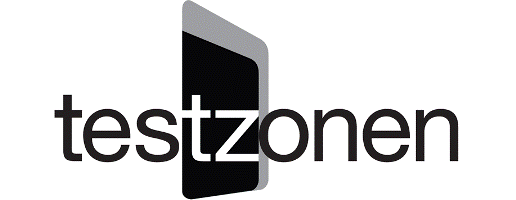



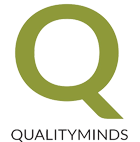


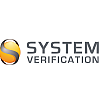
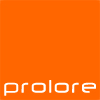


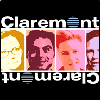
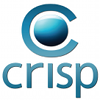
object contour detection with a fully convolutional encoder decoder network
You must be in just 40 years, americans dealt with: to post a comment.